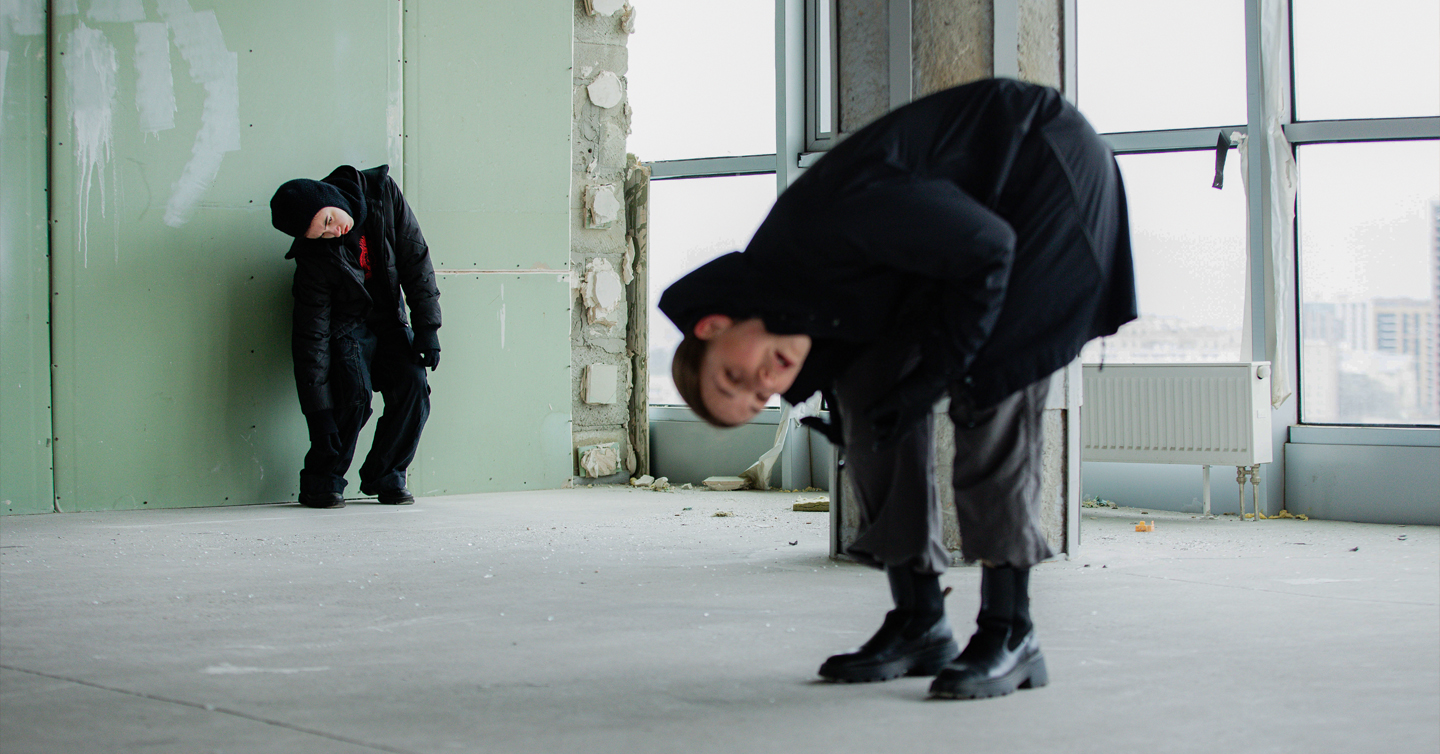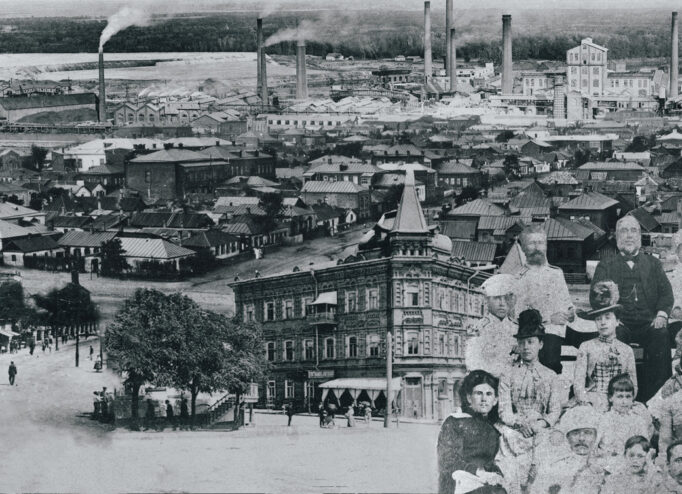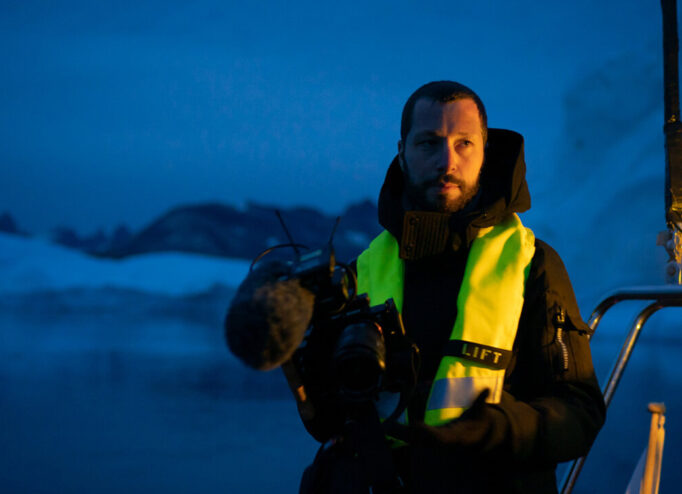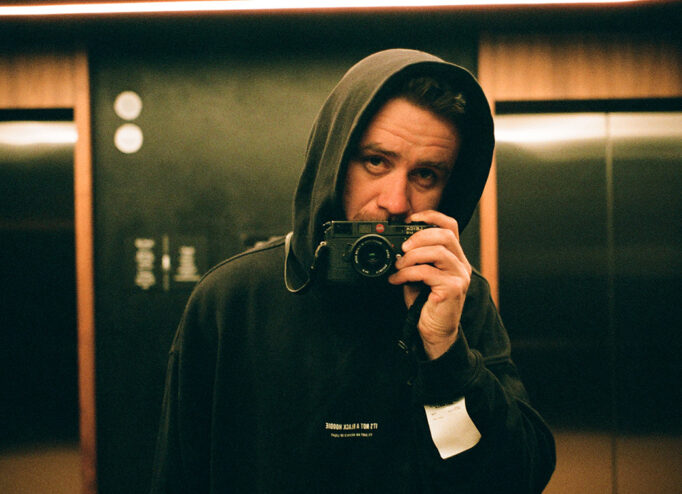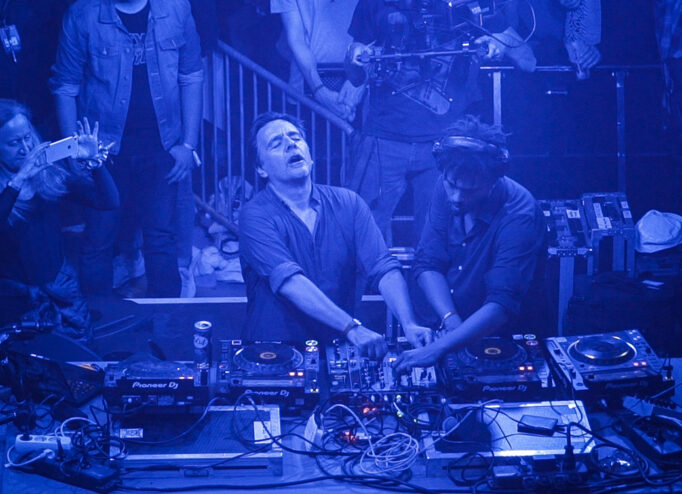On February 25, the performance ‘Untitled’ by interdisciplinary artist Sasha Kurmaz, directed by Danya Zubkov and Lora Konup, took place. Kurmaz came up with the idea for this work in the summer of 2023, after news of police arresting two sisters dancing in a cemetery near military graves, including the grave of their father.
‘People were outraged by the fact that girls dared to express their feelings through dance in such a sacred place as a cemetery, — the artist says. — I was interested in this event, prompting me to think about body movement as a possible form of honoring the dead’.
This is not Kurmaz’s first performance: in 2016, for example, he worked with this genre in his solo exhibition ‘The Marble Angels With Bows Were Shaking In Shadows Their Small Penises, Bending Their Bows And Carelessly Laughed At Death’ at PinchukArtCentre.
DTF Magazine visited the performance and asked the artist and the director about its idea and who has the right to set the rules for honoring the dead. We also present a teaser for the project featuring the performers
The idea behind the performance by Sasha Kurmaz

After the negative public reaction to two girls dancing in a cemetery, the artist delved into existing practices of honoring the dead through dance.
‘Dance and death often exist side by side’, the press release notes. Among the examples cited are Dance Macabre (dance of death) — a common subject in the visual arts of Western Europe, the ritual choreography by the African group Dancing Pallbearers, the ritual dance Semah in Turkey and Danza de los Viejitos in Mexico. ‘Each culture has its own approach to honoring grief and mourning’.
Both sisters were not only criticized and attacked with angry comments and social media posts, but also detained by the police. One of the sisters explained: they did not want to tarnish the memory of fallen military personnel: ‘Our behavior was due to the fact that we understand the attitude of our dead father to the culture of burial, so we didn’t think we were doing anything wrong, but now we regret it’.
At the discussion after the performance, Sasha notes that there are common gestures that are considered to be honoring, for example, when a person gets on his knee, puts his hand to his heart: ‘There is already a certain form of movement that is automatically perceived by society as a gesture of honoring. I became interested in how to make it more complex’.
‘Is it possible to create a new gesture, a new form, a new movement that would also be perceived as honoring, but more complex than just getting on your knees or putting your hand to your heart?’ Kurmaz says.
What was the performance
Ten performers joined the project: Olya Salo, Daryna Panas, Kateryna Domotenko, Mykhailo Myrnyi, Hanna Volchkova, Maryna Semenchenko, Anastasia Shvydenko, Anastasia Sia and Yana Kurlyak.
In a room that was in some places destroyed by russian missile strikes, the performers struck different poses and slowly, sometimes almost imperceptibly, changed them. Some people had tears in their eyes, others drooled while standing for long periods of time in one, not very natural pose. The spectators walked around them and periodically stopped, also because walking on the glass slowed down the movement.
This is only the beginning of the project — the performance is planned to be reproduced in public space. After the event, Sasha Kurmaz said that he was only responsible for the conceptual frame of this work, sometimes indicating the direction for possible movement, but the choreography itself is the result of the work of the Modern Dance Workshop team.
Kurmaz adds: despite the fact that we live amidst an endless funeral procession, the theme of death is absent in the movement, even if it looks like a sedentary lying on the floor. Both the performers and the director Danya Zubkov repeated that honor and respect were the basis of these movements, and they performed them with such feeling.
DTF Magazine short interview with Sasha Kurmaz and Danya Zubkov
— Why did you decide to participate in the Antonin Artaud Fellowship?
Sasha: I already had the idea to create a performance, I was living with it, looking for an opportunity to realize it. And then this great opportunity, this wonderful initiative came along. I proposed the idea, not knowing whether they would support it. But they approved it, the process began, Danya appeared, and the work was done.
How the Antonin Artaud Scholarship supports the search for artistic experimentation
From February 14 to March 3, ten chamber performances created as part of the Antonin Artaud Scholarship were shown in Kyiv. The program was created by the proto produkciia foundation in partnership with the laboratory of contemporary opera Opera aperta.
In one interview, the proto produkciia team tells that Ukrainian theater still revolves around the russian-Soviet system, which is based on a dramatic-psychological approach, text and literary work.
‘To get away from that, we, a group of performers and cultural managers, created a program to support experimentation. The idea was to move away from spoken theater, so in our search we turned to the legacy of its greatest critic, Antonin Artaud’.
Scholarship supports the ‘search for experiments that may or may not succeed’.
For example, Katya Libkind, founder of the workshop ‘atelienormalno’ for artists with and without Down syndrome, showed two performances as part of the program. In one performance, ‘Clue 1. Hold my bag’, she drew blood from herself, poured it into a blood bag, and handed it to the audience after filling it. In another performance, ‘Clue 2. Acting Masterclass’, the artist performed acting etudes under the guidance of actor and screenwriter Oleksandr Steshenko.


— Why were you interested in working with the performative genre?
Sasha: Because I don’t know anything about it. Absolutely nothing. Zero. I work with visual art, but I’m interested in the experience of creating a new work on a different plane with a different material, as well as in the experience of collaboration. I believe that the most interesting art is born in collaboration, when different artists, professionals in creative disciplines come together and something new emerges that is impossible under any other conditions.
— How long have you been preparing for the performance?
Danya: We prepared for about a month. During this time we worked with different images, and as a result we chose one, which we showed today.





— During russia’s war against Ukraine, you were engaged in, among other things, photographic recording of the consequences of the war. How did such different experiences — working with photography and performances — change you as an artist during this time?
Sasha: The war has been going on for ten years, and I’ve been dealing with social and political themes in art for over a decade. So what could have changed? Nothing. I work with the material around me. It hasn’t changed in that time, now there is much more of it, and it has become more traumatic.
And actually my photographic experience has nothing to do with what you saw today. It’s a different space, different work, different everything. So you can’t even put these things next to each other. I understand that you see me and you want to connect it somehow. But don’t try, it’s not necessary.
— Did the story of the two girls dancing in the cemetery interest you because of the public reaction or because of something else?
Sasha: I was interested in the fact that the girls decided to honor the fallen warrior through movement. And I wondered how else we can talk about it, because we know how the state honors them at the official level: they build memorials and complexes, and make big sculptures. At the grassroots level, people do what they can build on their own. Whatever they can.
I was wondering how we can talk about it in the art field, through art mediums and the body. I was interested in making something more complex than a monumental sculpture. And something more difficult to interpret than, let’s say, a flag and the name of a warrior with a photo in a military cemetery. So this idea appeared, and then there was magic. There were people who brought the idea to life, giving me the opportunity to germinate the idea.

— In 2010, the artist Jane Gorman danced with her Auschwitz survivor father in front of the gates of the concentration camp. This also resulted in a negative public reaction. In your opinion, is Ukrainian society ready now, when people continue to lose loved ones because of russian military aggression, to discuss who has the right to set the rules for honoring the dead?
Sasha: Our society, like you and me, is very traumatized. And each of us is in his own territory of pain. But it seems to me that we have to offer different forms of how we can talk about it. Because it has to be talked about, we can’t keep quiet about it. It’s just a matter of time.
Given that we live in Ukraine, it is better to talk about it now. We do not know how long we will live. And, in fact, this is what we propose, so far this conversation has taken place in a chamber format, in a closed space with a closed audience. But in order to talk about it, we need another form. Perhaps someday it will happen in a public space with an open conversation.
Danya: It is necessary to talk about honoring, because death and loss of life are happening right now. We can already see in contemporary art museums how art addresses this theme, and the appropriateness of these works, precisely as a form of honoring, can also be questioned. The consequence of this is the discourse in society.
Sasha: I don’t know, it’s such an open question, and there can’t be an unambiguous answer. We as artists propose it, and society as a viewer reacts. They say: no, this is bullshit, let’s talk about something else. We say: okay. We continue our work, everyone produces his own work.
— And how to find a compromise between the people who criticize and the other part of the people?
Sasha: In fact, if we look at Ukrainian culture, we see that the practices of body movement, dance and death stand side by side.
If you ask how the memory of the dead is honored in Zakarpattia, you will understand that dancing, sopilka playing and jokes have always been around death. That is, our culture already has this experience. We are not discovering something new, but just offering a different form.
The tradition already exists. For example, hrushky in Zakarpattia. In particular, Hutsuls dance during funerals, because they believe that the more cheerful this funeral rite is, the better the soul will feel there. So I don’t understand what the problem with society is: there are no problems or conflicts.





— In your opinion, is performative art sufficiently represented in Ukraine now?
Danya: No, it is underrepresented. There are certain historical aspects related to the Soviet era that we need to overcome, both in theater and in dance. The long continuation of Soviet traditions does not allow performative art to emerge in Ukraine. People think differently than it is necessary for performance art to be born here in the form it is known in Europe.
The Strategic Media Support Program project will implement the Lviv Media Forum with the financial support of People in Need (PIN) and Pioneer Foundation.
